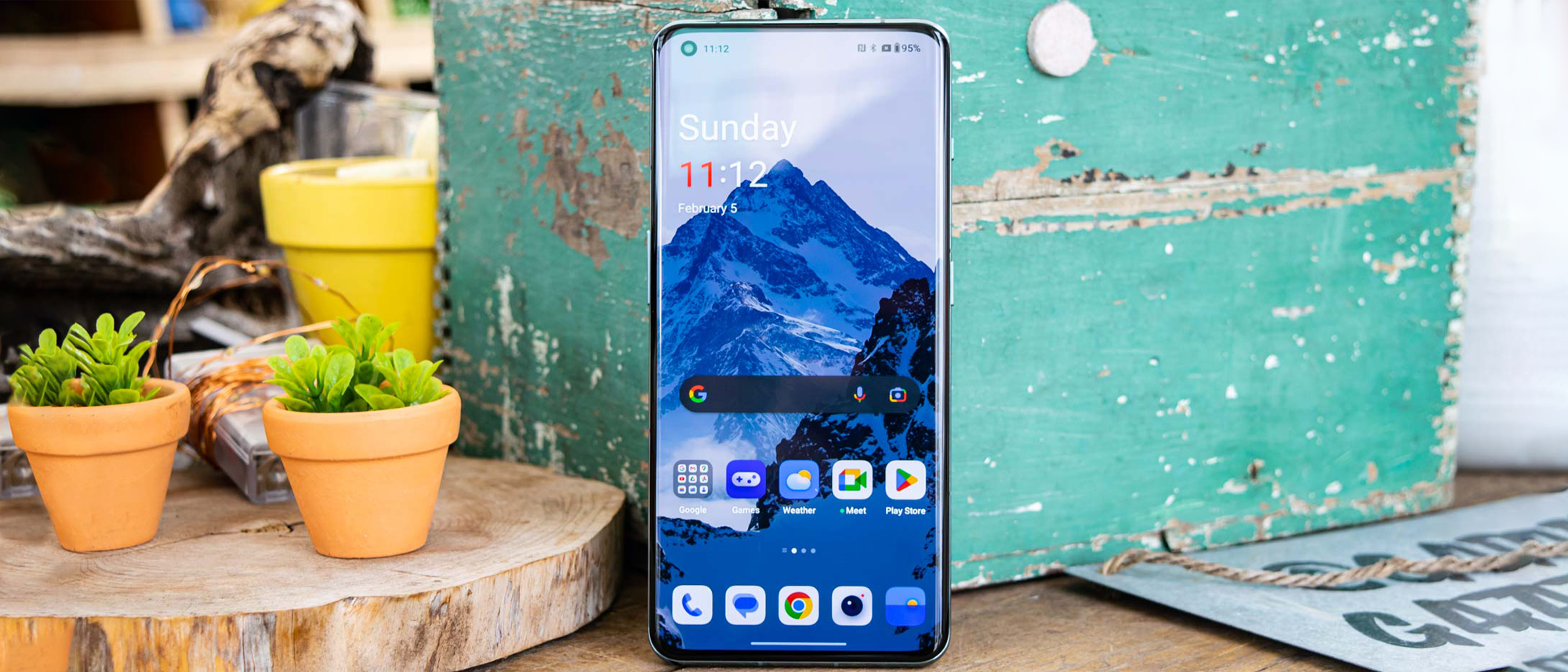Tom's Guide Verdict
Aside from an odd lack of wireless charging, the OnePlus 11 is a true return to form for the phone maker. This is a beautiful and well-built device that sets the bar high with extremely good battery life and a jaw-droppingly low starting price of $699.
Pros
- +
Insanely good battery life
- +
Excellent performance
- +
Better update policy than previous OnePlus phones
- +
Great display
- +
Vastly improved cameras
- +
Killer starting price
Cons
- -
No wireless charging
- -
Telephoto only 2x
Why you can trust Tom's Guide
Price: $699, $799
Android version: 13, OxygenOS 13
Display: 6.7-inch AMOLED (3216 x 1440)
Refresh rate: 1-120Hz
CPU: Snapdragon 8 Gen 2
RAM: 8GB, 16GB
Storage / Expandable: 128GB, 256GB / No
Rear cameras: 50MP (f/1.8) main, 48MP (f/2.2) ultrawide, 32MP (f/2.0) 2x telephoto
Front camera: 16MP (f/2.45)
Battery: 5,000 mAh
Battery life (Hrs:Mins): 13:10 (adaptive), 12:48 (60Hz)
Charging: 80W
Size: 6.4 x 3 x 0.3 inches (163.1 x 74.1 x 8.53 mm)
Weight: 7.2 ounces (205 g)
Colors: Titan Black, Eternal Green
I’ve had no hesitation calling out OnePlus for losing its way from the company that many of us fell in love with many years ago. But the OnePlus 11 rights the ship, clocking in with top-notch hardware at an attractive price. Seriously, this phone is just $699.
While the Samsung Galaxy S23 Ultra is the king of the Android hill, OnePlus seems to have another rival in mind with this phone. The OnePlus 11 firmly slots in between the Pixel 7 and Pixel 7 Pro, which is a good place to be considering all this phone has to offer.
From absolutely stellar battery life to great performance and the best OnePlus cameras to date, the OnePlus 11 makes a serious statement as one of the best Android phones you can get for less than $700. More importantly, it’s a return to form for OnePlus. This flagship undercuts the competition with its top-of-the-line feature set, providing an incredible value that you should certainly consider.
There is no Pro model this year — OnePlus says you don’t need the Pro name to get a pro phone. And this OnePlus 11 review finds the phone maker knows what it’s talking about. Even with the Galaxy S23 looming over it, the OnePlus 11 sets a high bar for Android phones in 2023.
OnePlus 11 review: Price and availability
One of the first things you’ll notice about the OnePlus 11 is the very attractive starting price. Coming in at $699 for the 8GB/128GB model, the OnePlus 11 aims hard at the $899 Pixel 7 Pro and $599 Pixel 7.
While it lacks some of the Pixel 7 Pro’s features — namely, wireless charging and a 5x telephoto camera — the OnePlus 11 offers a lot more than you’d expect. And for $100 more than the Pixel 7, you get a 2x telephoto/portrait lens, which you won’t find on Google’s entry-level flagship.
We can also draw comparisons between the OnePlus 11 and the new Galaxy S23. At $799, Samsung’s flagship does a lot right, as you can read in our Galaxy S23 review.
Get instant access to breaking news, the hottest reviews, great deals and helpful tips.
And, of course, there’s the iPhone 14 at $799 and iPhone 14 Pro at $999 to consider. The OnePlus 11 tries its best to match Apple’s strength and in many ways, it proves a suitable competitor to the best iPhones.
If you truly embrace Android, the OnePlus 11 certainly offers a compelling alternative to the iterative Galaxy S23.
OnePlus has told us that you can buy the OnePlus 11 from either its store or Best Buy from February 16. There’s a second variant featuring 16GB of RAM and 256GB of storage that I tested for this review; it costs $799.
OnePlus 11 review: Design
OnePlus refined the design first introduced with the OnePlus 10 Pro last year. The OnePlus 11 has a solid heft to it, complete with a study construction and premium build quality. The front hasn’t changed much, keeping the curved display and the front camera hole-punch cutout in the top left corner.
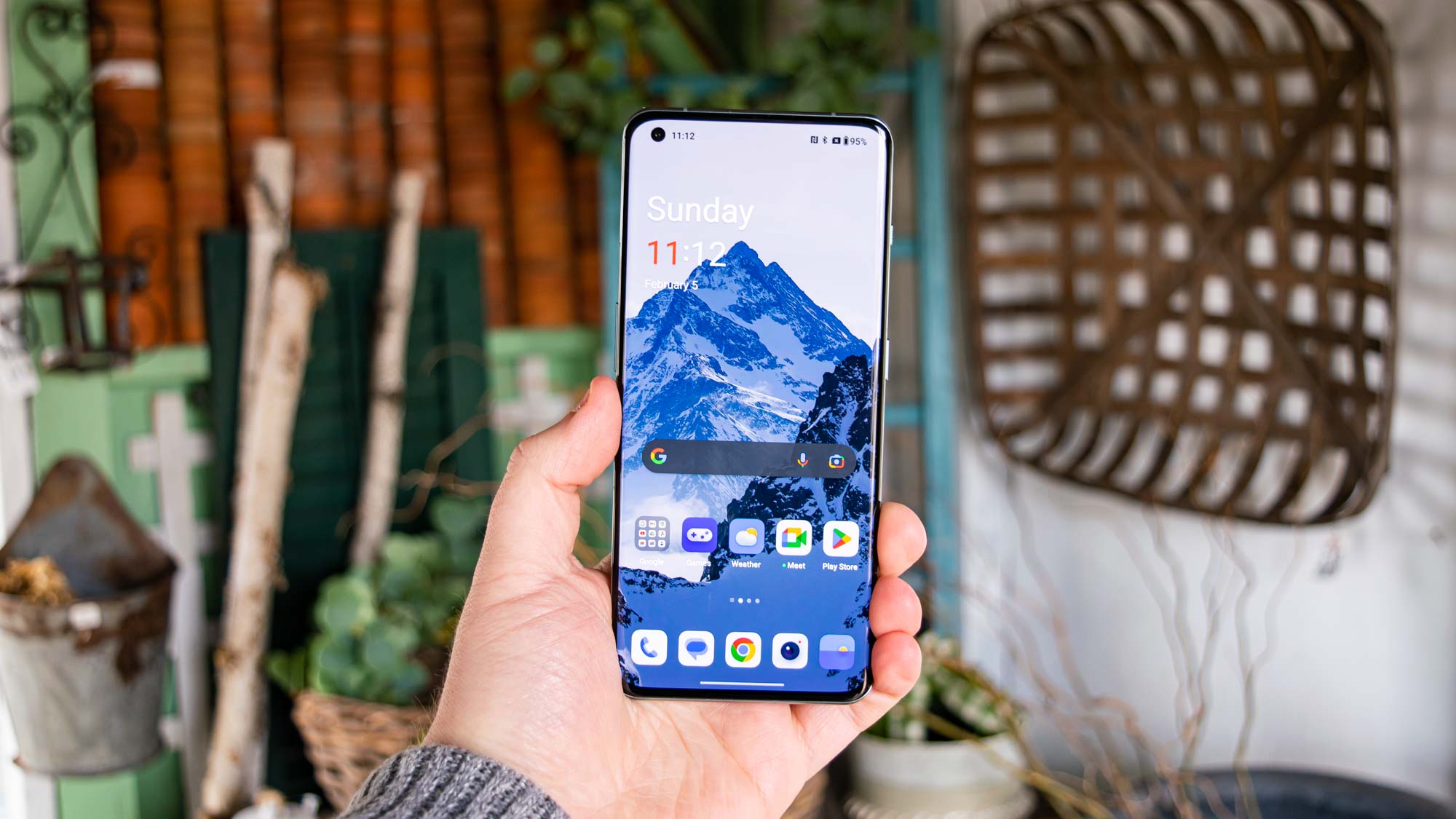
The standout feature of the OnePlus 11’s look is its new camera module design. While it still blends in with the phone’s frame, the hump around the lenses is circular rather than square like last year. The cameras and flash are still arranged in a 2x2 grid, but the circle is what caught my eye.
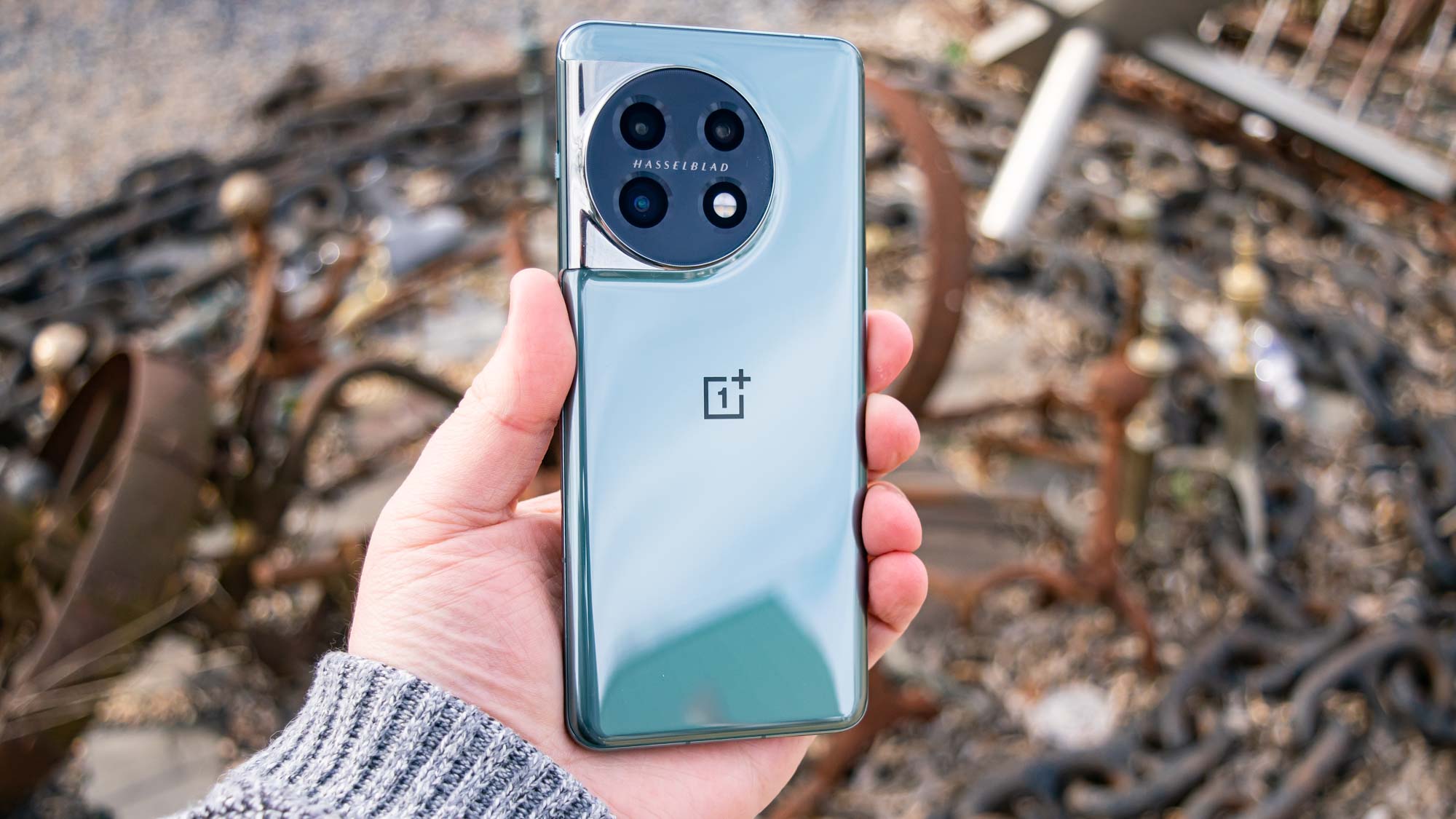
It’s not as bold as the Pixel 7’s camera bar, itself a polarizing feature, but the OnePlus 11 certainly stands out from the cluster of lenses we’re used to seeing from smartphones. Even the Galaxy S23’s individual lenses don’t draw your attention as much as the OnePlus 11’s circular camera hump.
Long-time OnePlus fans will be happy to know that the alert slider is still here after the company omitted it from the OnePlus 10T. There’s also an IP64 rating, something OnePlus hasn’t always included with its flagships. The Eternal Green OnePlus 11 model I received, like the silver OnePlus 9 Pro in 2021, is highly reflective and shows off fingerprints rather prominently. There’s also a Titan Black colorway that might do better with smudges.
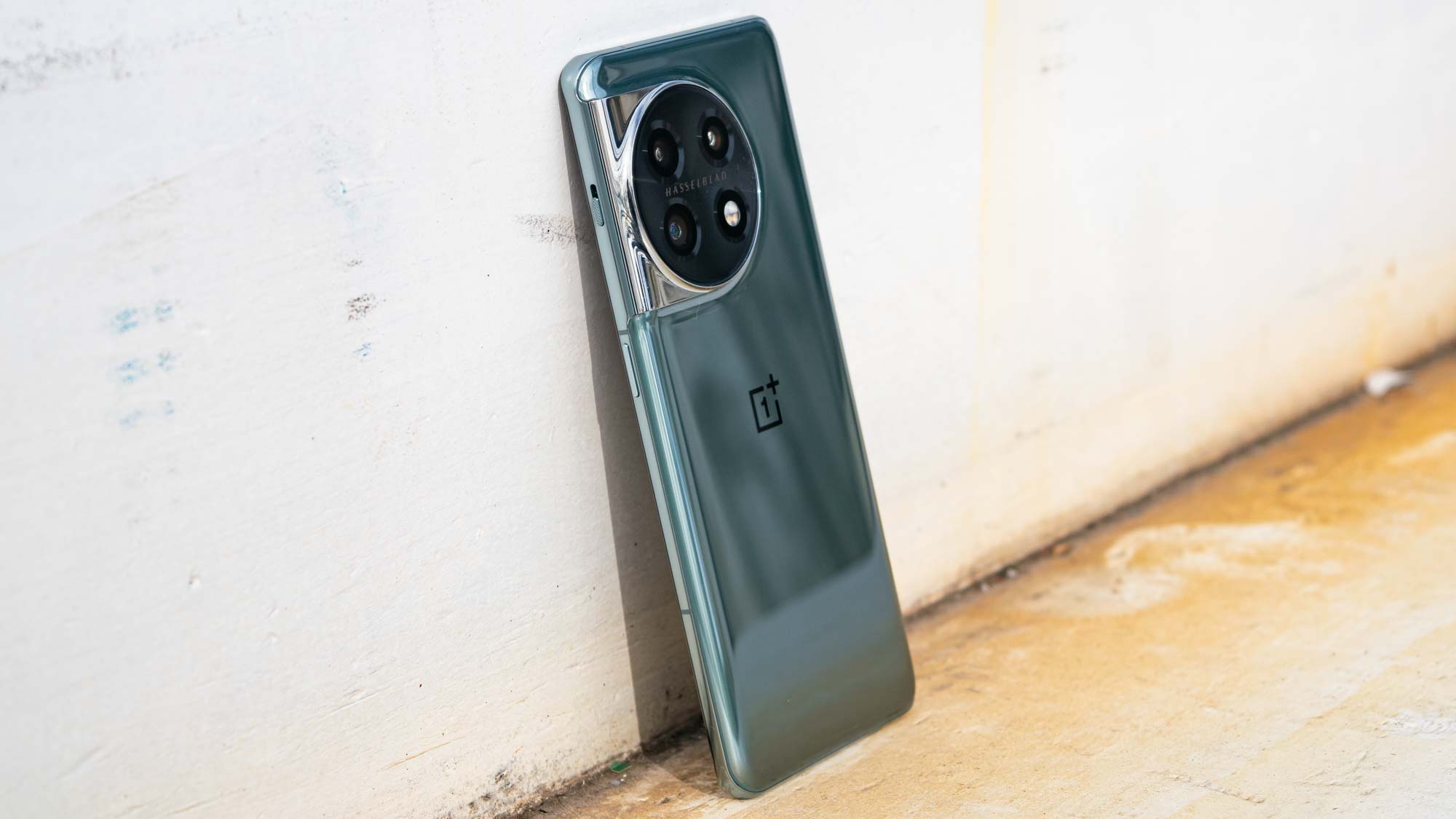
OnePlus has done a good job with design and build quality for several years now, and that continues with the OnePlus 11. Hardware has rarely been the company’s biggest challenge, but I’m confident in saying that this is the nicest and prettiest phone that OnePlus has ever produced — even better than some past hits like the red OnePlus 6.
OnePlus 11 review: Display
OnePlus has used great AMOLED displays for a few years, and the OnePlus 11 is no different. At 6.7 inches, it’s far from a small screen, but it packs a QHD+ resolution and a dynamic 1-120Hz refresh rate.
Here is what we gathered for the OnePlus 11’s display.
| Row 0 - Cell 0 | OnePlus 11 | Pixel 7 Pro | iPhone 14 Pro |
| Display size | 6.7-inch AMOLED | 6.7-inch OLED | 6.1-inch OLED |
| sRGB (%) | 171 (Vivid) / 117 (Natural) | 105 (Natural) | 120 |
| DCI-P3 (%) | 121 (Vivid) / 83 (Natural) | 74 (Natural) | 85 |
| Delta-E | 0.31 (Vivid) / 0.24 (Natural) | 0.28 | 0.25 |
| Peak brightness (nits) | N/A; inconclusive | 927 | 1,448 |
I spent quite a bit of time watching videos and playing games on the OnePlus 11, concluding that this is an excellent display in terms of colors. On paper, it beats the Pixel 7 Pro and in practice, I did notice that the OnePlus 11 has punchier colors and deeper blacks.
In the Natural setting, the OnePlus 11’s Delta-E color accuracy score, where 0 is perfect, proved better than both the Pixel 7 Pro and iPhone 14 Pro. That’s rather impressive.
I have but one complaint — the OnePlus 11’s auto brightness. I don’t know if it’s my unit or a software issue, but the auto brightness is hyper-aggressive. It dims far too much indoors and doesn’t boost enough in direct sunlight. We’re still testing to see if this behavior persists across other units.

OnePlus rates the display at 1,300 nits, and our test results showed some wild inconsistencies that we could not account for by the time we had to publish this review. When I turned auto brightness off and bumped the display to the max, it was more than legible outside, which was great for all of the camera testing I did.
My favorite way to test the quality of a display is to watch Blade Runner 2049 and play Genshin Impact. Both feature rich color palettes which reveal what a phone can do. With the former, the OnePlus 11 did an excellent job with the bright neons and grim orange tones. I felt drawn into the futuristic Los Angeles cityscape in a way that few handsets can do.
At the same time, Genshin Impact’s saturated anime-esque aesthetic found a good home on the OnePlus 11’s display. Coupled with the smooth 120Hz frame rate, the game played and looked better here than basically every other Android phone I’ve tested.
Other games took advantage of the 120Hz refresh rate, too, making for one of the best gaming experiences I’ve had in a while, even compared to the iPhone 14 Pro that I carry with me everywhere.
While I think the Galaxy S23 has the superior display — which should surprise no one given the Korean company’s display panel acumen — the OnePlus 11 gives the iPhone 14 Pro a run for its money. Other than that auto brightness weirdness, this screen looks good from all angles.
OnePlus 11 review: Cameras
The OnePlus 11 benefits from the third year of a partnership between OnePlus and lens specialist Hasselblad. This phone rocks a 50MP main camera along with a 48MP ultrawide shooter and a 32MP telephoto/portrait lens. Oddly enough, on the latter sensor, the optical zoom tops out at 2x, with OnePlus placing a heavy emphasis on portraits over zoom. That’s quite a downgrade from the OnePlus 10 Pro’s 3.3x zoom, but a significant bump in resolution from 8MP. It would also seem to put the OnePlus 11 at a disadvantage to the Galaxy S23 and its 3x optical zoom.
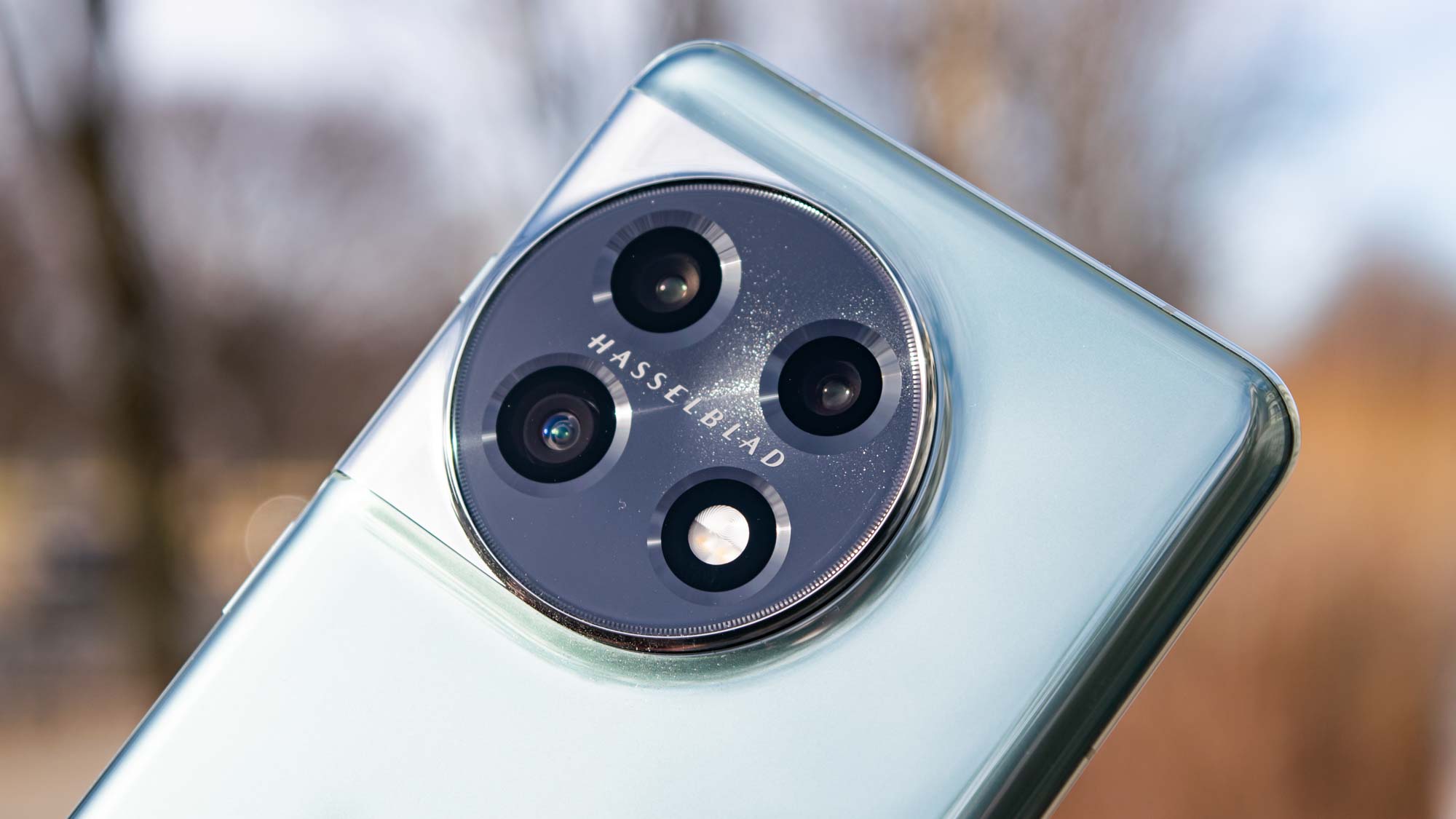
Around front is a modest 16MP selfie camera with a narrow aperture (f/2.45). As a result, in my testing, selfies seemed a little dark in dimly lit areas. It’s a narrower aperture than the OnePlus 10 Pro’s f/2.2.
I brought out the Pixel 7 Pro for this camera comparison, so we’ll start off with this picture of the Smithsonian Castle’s facade. I was shocked to see how similar the two images looked, but I see slightly more saturation in the OnePlus 11’s shot, especially in the redness of the bricks.
The OnePlus 11 also did a great job with the sun’s halo effect as it rose behind the building, with a shot that’s almost indistinguishable from the Pixel’s. While I prefer the Pixel’s natural colors, the OnePlus 11 is so close in this contest that I can’t pick a winner.
With this photo of the National Museum of African American History and Culture, both phones performed admirably, but I’m most impressed by the OnePlus 11. I expected the Pixel 7 Pro to do a good job with this building in the bright sun, but I never expected anything this good from OnePlus. The OnePlus image is brighter overall, making it easier to see the building’s details. The colors in the flags also look more vibrant.
The Pixel easily wins with the sky coloration, picking a proper blue, whereas it looks a bit hazy in the OnePlus 11’s image. With all of that in mind, I give the win on this photo to OnePlus.
Where the Pixel steps out ahead is in this photo of inside the Lincoln Memorial. Plenty of daylight streamed in from the entrance, which the Pixel caught near perfectly. The OnePlus 11 really warmed up the overall image, reminding me of the OnePlus 10 Pro’s tendency toward a sickly yellow tinge at times. It’s not as pronounced here, but I think the Pixel expertly captured the feel of the scene in the quiet memorial.
To test in a dimmer environment, I took this picture of the Smithsonian metro stop’s sign. While the OnePlus 11’s lighting is good with the sign easily legible, I see the aggressive warmth again. The Pixel 7 Pro kept things cooler while showing off the sign brilliantly. This comparison, combined with the last one, leads me to believe that OnePlus still has some work to do on indoor photography.
For the ultrawide test, I captured the Lincoln Memorial’s exterior — and learned that where I stood was not level with the building. The OnePlus regains some ground lost on the indoor comparisons. As with the castle photos, I noticed some more saturation in the OnePlus 11’s shot, while the Pixel keeps things natural. I think the OnePlus 11 recreates the sky better.
In either photo, however, you can clearly see the details in the memorial’s architecture, something that impresses me given that these pictures came from the ultrawide sensors. I also didn’t notice any lens distortion in either image. So I have to call this one a draw. The OnePlus 11 did a great job here, as did the Pixel 7 Pro.
For the telephoto comparison, I stood some distance away from the Washington Monument and zoomed in on the tip where you can see the windows. Obviously, the Pixel 7 Pro managed to get closer with its 5x zoom. Its photo is also a bit brighter than the OnePlus 11’s. Both images are crisp, considering they’re zoomed in (a testament to the OIS in either device), but the Pixel wins with a stronger zoom factor, allowing you to capture more details from afar. And don’t forget about the Pixel’s 2x mode, which uses both the main and telephoto sensors.
Here’s a quick test of the max digital zoom for the OnePlus 11 (20x) and Pixel 7 Pro (30x). The former struggled a lot with stabilization, colors, and sharpness. The Pixel is a clearer image, allowing me to make out more details on the building, thanks in part to Google’s Super Res Zoom technology that OnePlus just can’t match.
While I think the OnePlus 11 has the best portraits we’ve ever seen from the Chinese phone maker, our comparison with the Pixel 7 Pro shows that Google is still leagues ahead. Look at not only the clarity in my face on the Pixel 7 Pro’s shot, but also the near perfect lighting and picturesque bokeh. The OnePlus 11 struggled with the sunlight behind me, making for an image that lacks the same amount of color that the Pixel had. The bokeh effect is also not as strong as I’d like to see in a portrait.
In this first nighttime sample of a Target storefront, it appears at first glance that OnePlus has the advantage since the image is brighter than what the Pixel 7 Pro mustered. Still, I think the Pixel 7 Pro did a better job simply because the Target signage doesn’t look so blown out and overexposed in its photo. It’s hard to say that Google truly won here with Night Sight because it certainly is a dimmer picture than the OnePlus 11’s, but the Target logo doesn’t look right to me in the latter’s.
To give either phone a second try, I took a picture of this sign. Here you can see a better example of what I just said about the Target sign with the OnePlus 11. In the Pixel 7 Pro’s image, the Kirby Club sign looks crisp, clean, and the image has a moody vibe that I really like. The OnePlus 11’s attempt looks overly washed out, since it seemed to fail to compensate for the sign’s neon vibrance and the lights above it. The Pixel easily won here.
Like with the portraits from before, it’s with selfies that the OnePlus 11 truly diverges from the Pixel 7 Pro. Considering some great photography conditions here at the National Mall, I dislike both pictures. The OnePlus 11 seriously brightened things, almost overcompensating for the shade I stood in. Sure, it significantly boosts the colors in my face, such as the red in my beard and blue in my eyes. It almost looks like I wasn’t in shadow, but unnaturally so.
Then again, the Pixel 7 Pro’s selfie isn’t too great, either. I’m far too dark, losing a lot of detail in the coloration that the OnePlus 11 boosted so much. The lines of my face stand out more as do the individual hairs in my mustache and beard, however. I don’t look so smoothed out like I do in the OnePlus 11’s selfie. If not for the dimness, the Pixel would win hands down. OnePlus’ attempt triggers my uncanny valley instincts.
The OnePlus 11 put up an incredible fight against the Pixel 7 Pro, even outperforming its best-in-class cameras in certain situations. This wouldn’t be possible with the OnePlus of yesteryear (let alone earlier!), so it goes to show that the Hasselblad partnership really has paid off. Color me impressed with what OnePlus managed to accomplish here as it claws its way into the best camera phone rankings.
OnePlus 11 review: Performance
With the Snapdragon 8 Gen 2 providing the power, the OnePlus 11 packs a punch. This is the best chipset available for Android phones and it comes decently close to Apple’s A16 Bionic in raw performance. In fact, it outright beats the iPhone 14 Pro in gaming benchmarks.
Here’s what we found when we tested the OnePlus 11.
| Row 0 - Cell 0 | OnePlus 11 | Pixel 7 Pro | iPhone 14 Pro |
| CPU | Snapdragon 8 Gen 2 | Tensor G2 | A16 Bionic |
| Geekbench 5 (single-core / multicore) | 1166 / 4962 | 1060 / 3046 | 1891 / 5469 |
| 3DMark Wild Life Unlimited (FPS) | 84 | 40 | 74 |
| 3DMark Wild Life Extreme Unlimited (FPS) | 22 | 11 | 19 |
| Adobe Premiere Rush (Mins:Secs) | 1:11 | 0:47 | 0:26 |
While Apple enjoys a rather large lead in Geekbench single-core performance over the OnePlus 11, the multicore scores are much closer than we’ve ever seen before. And the Pixel 7 Pro’s Tensor G2 doesn’t hold a candle to the OnePlus 11 here, though that’s not at all surprising given Google’s primary focus with its Tensor chips.
The Galaxy S23 also features a Snapdragon 8 Gen 2 chipset, with Samsung scoring a customized version for its phones. We’ll update this review with those scores when they’re ready.
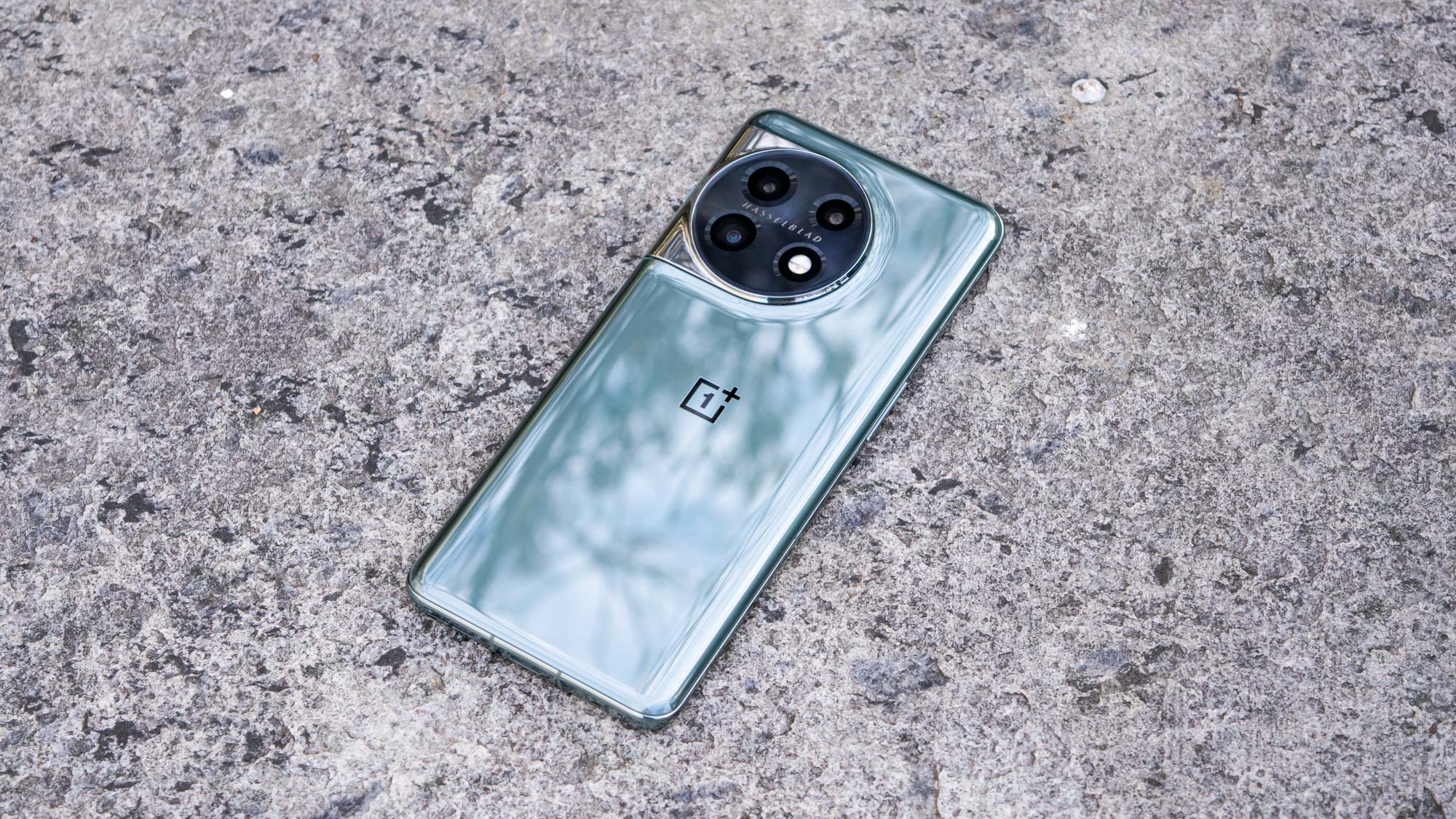
I threw the most demanding things I could think of at the OnePlus 11. Genshin Impact and Apex Legends Mobile at max settings proved to be no problem with smooth, consistent frame rates the whole time to my eye. The Wild Life benchmark results corroborate my experience, with the OnePlus 11 proving to be a stronger gaming phone than even the iPhone 14 Pro. That took me completely by surprise.
You might have noticed an oddity in the table above. The OnePlus 11 significantly lagged behind both the Pixel 7 Pro and iPhone 14 Pro in the Adobe Premiere Rush 4K-1080p transcode test. At one minute and 11 seconds, OnePlus seems to have repeated whatever mistake it made last year with the OnePlus 10 Pro. (This exact same thing happened.)
It’s obviously not the Snapdragon 8 Gen 2, as the Galaxy S23 Ultra could do the test in 39 seconds. So there’s something up with OnePlus and how it handles Adobe Premiere Rush.
OnePlus 11 review: Battery life and charging
The OnePlus 11 absolutely shines when it comes to battery life. So far, it’s the best phone we’ve tested yet in 2023, outpacing many of the best phones from 2022. With a 5,000 mAh power pack, the OnePlus 11 runs circles around the Pixel 7 Pro and iPhone 14 Pro.
| Row 0 - Cell 0 | OnePlus 11 | Pixel 7 Pro | iPhone 14 Pro |
| Battery size | 5,000 mAh | 5,000 mAh | 3,200 mAh |
| Battery life (Hrs:Mins) | 13:10 (adaptive) / 12:48 (60Hz) | 8:04 (Adaptive) / 7:55 (60Hz) | 10:13 |
| Charging | 80W (U.S.) / 100W (international) | 33W | 20W |
| Recharge percentage (15 mins) | 57 (80W) | 19 | 30 |
| Recharge percentage (30 mins) | 97 (80W) | 39 | 57 |
With a great result of 13 hours, 10 minutes, the OnePlus 11 endured the Tom’s Guide battery life test without breaking a sweat. Here, we challenge a phone to endlessly reload web pages over a cellular connection until it dies, at which point we also test the recharge speed.
That result is over five hours longer than the Pixel 7 Pro’s meager 8 hours and 4 minutes. The OnePlus 11 even outlasted the iPhone 14 Pro by about 3 hours. You can bet that the OnePlus 11 will sit comfortably in our list of the best phone battery life. While it’s not the best Android flagship — outclassed by the Asus Zenfone 9 and Asus ROG Phone 6 Pro, the latter of which blows everything else out of the water — the OnePlus 11 nears the iPhone 14 Pro Max’s 13:39.

The OnePlus 11 continues its victory lap around its biggest competitors with its charging speed. At 80W in the U.S. (and 100W internationally), this phone can basically regain all of its battery capacity in 30 minutes. The Pixel 7 Pro and iPhone 14 Pro aren’t even close to that.
However, the OnePlus 11 does have a notable omission: wireless charging. For some reason, OnePlus, the company that pushed super fast Qi charging just a couple of years ago, decided to leave out a wireless charging coil on its latest flagship. The reasons for this remain unknown, but my guess is that it has something to do with cost and making sure this phone came in at that $699 price.
It’s not a huge problem, merely an inconvenience, but definitely worth noting if you’ve migrated mostly to wireless chargers in your home as I have.
OnePlus 11 review: Software
I’m of two minds with the OnePlus 11’s software. On one hand, it’s Android 13 with a promise of four years of platform updates and five years of bi-monthly security patches — I commend this wholeheartedly. On the other hand, OxygenOS 13 is one of my least favorite Android skins right now. The user experience is a large downgrade from previous versions, even OxygenOS 12.
While it looks nice on the surface with lots of roundness, accelerated transitions, and lots of customization, OxygenOS 13 is hampered by the fact that it’s a carbon copy of sister company Oppo’s ColorOS. In fact, the OnePlus 11 ships with ColorOS in China.
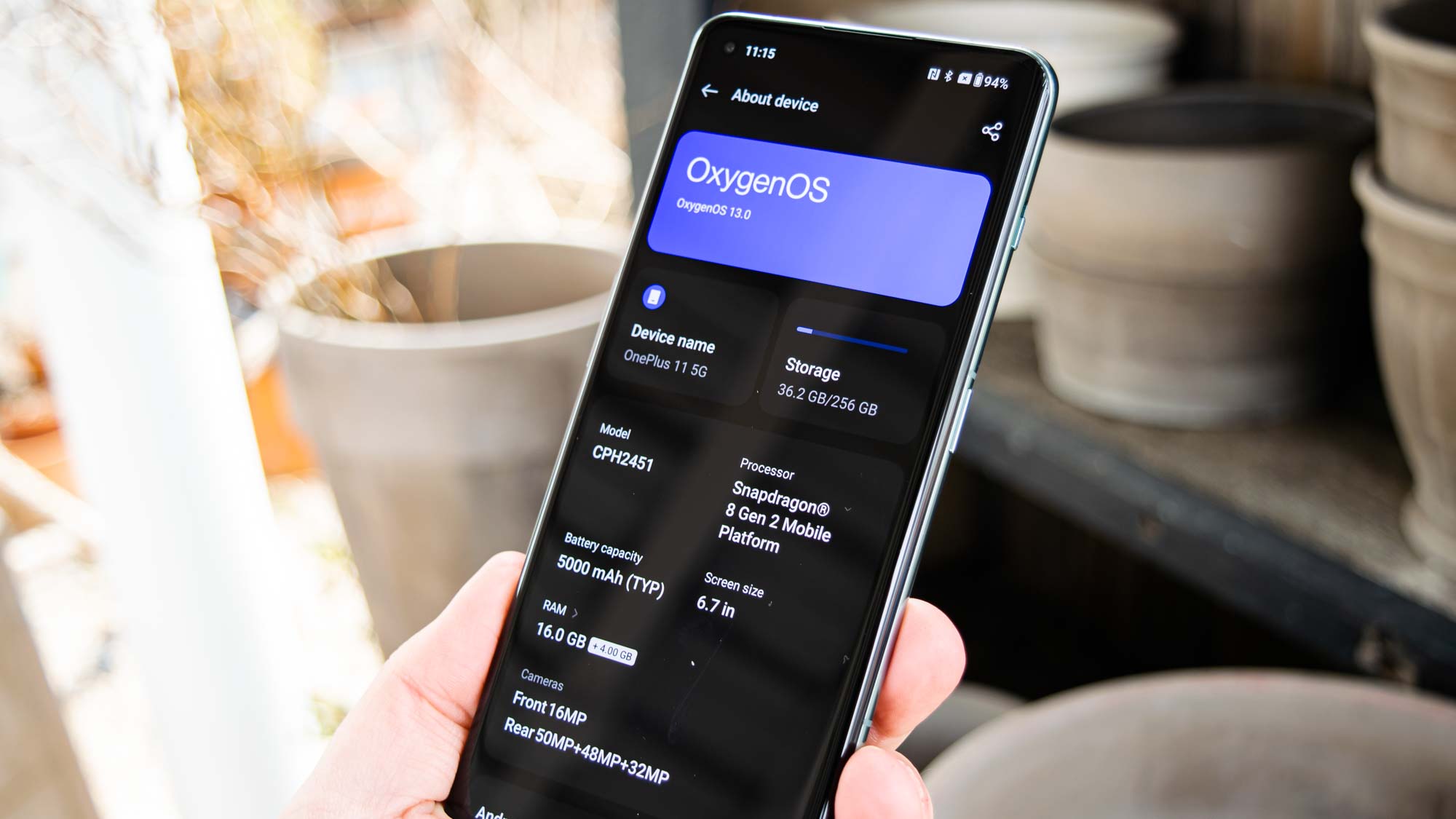
Compared to Samsung’s One UI, and especially Google’s vision in stock Android 13, OxygenOS 13 contains too much clutter. One UI toes the line of being too busy, but the design language is cohesive enough that it feels like it belongs. Material You on the Pixel lineup also has a lot of cohesion, though it’s far from perfect.
This modern rendition of OxygenOS has disparate elements that distract from the skin’s strengths. It’s a clunky interface, it packs in too many features whose utility is dubious at best, and it never addresses the problems I had with OxygenOS 12 — it makes them worse.
The amount of terms and conditions I had to agree to in order to use basic features left me concerned. As a privacy-conscious person, I definitely found myself really uncomfortable with what I was agreeing to and, more importantly, why I needed to in the first place. Why does the camera app need a Statement of Use?
OxygenOS 13 is the worst software that OnePlus has ever put out, mostly because it’s ColorOS with a different color palette. The minimalist approach, which reached its peak in OxygenOS 11, was the way to go and why many, myself included, called OxygenOS the best version of Android period, surpassing even Google.
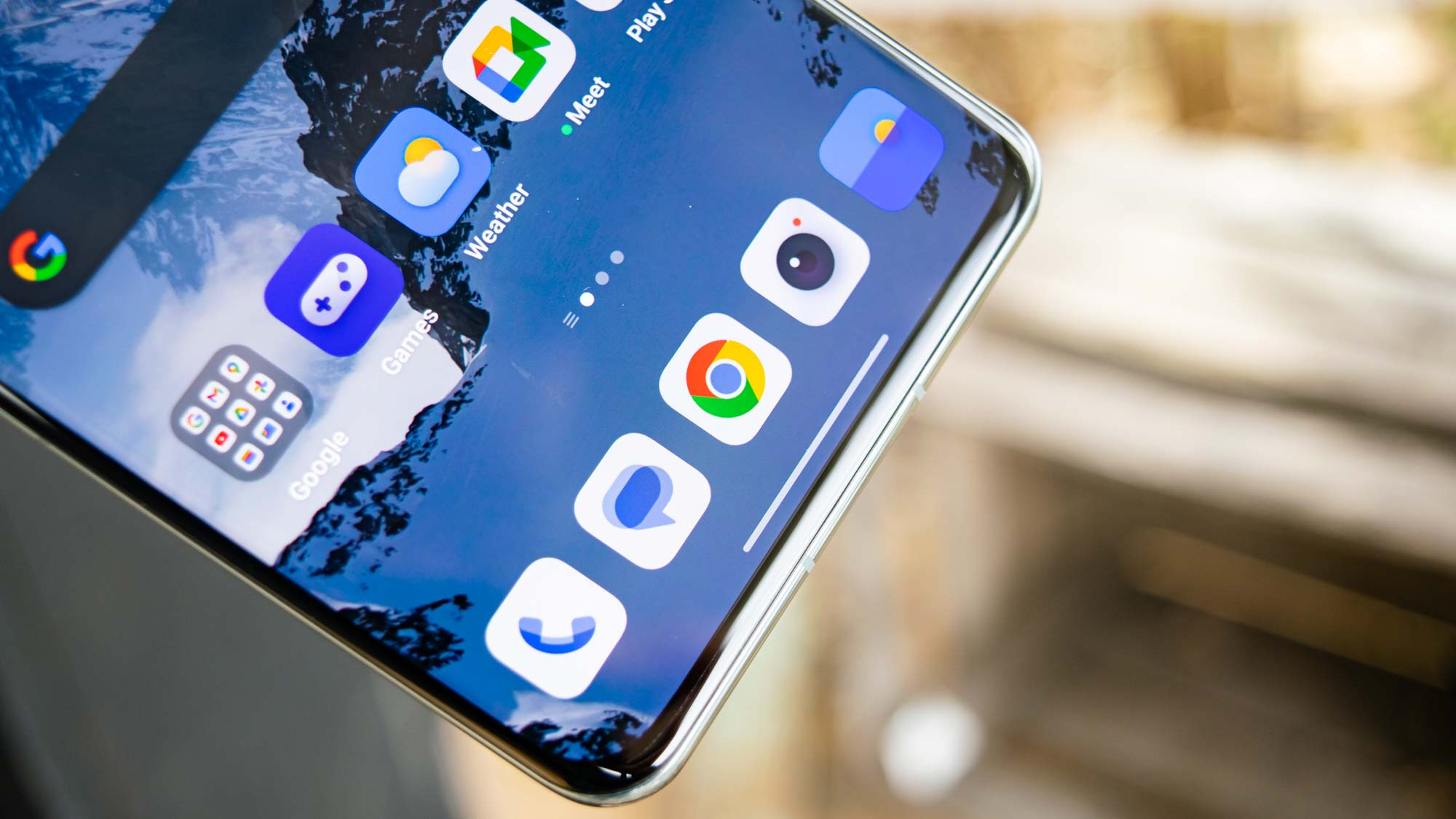
The feature overload in OxygenOS hampers the OnePlus 11’s effectiveness as a smartphone that nails the basics. There’s just too much going on, and while you can do your best to ignore most of it, a lot of it drags the user experience down. I don’t think a OnePlus phone needs a sidebar, for example, something I don’t think any phone needs. (It’s much better suited to a tablet or tablet-sized screen.)
It’s difficult to qualify my dislike for OxygenOS 13, as I have a nearly indescribable distaste I experience when I use it. This isn’t true for a Samsung or Google phone. The OnePlus 11 would be better served by more minimal software, lean and efficient. What’s there now is just too bloated.
OnePlus 11 review: Verdict
I like the OnePlus 11 a lot. From the premium design to the insanely good battery life and vastly improved cameras, this phone is a killer deal at $699. It certainly gives the Pixel 7 a run for its money and definitely challenges the Pixel 7 Pro. The Galaxy S23 and Galaxy S23 Plus better be on the lookout, too.
Much like the lack of wireless charging, the OnePlus 11 has some interesting downgrades or compromises with its cameras, likely to keep the price low. That said, the primary sensor does a very good job, as you saw earlier. I didn’t like the selfie performance at all, but that could be down to personal preference.
Of course, if I had to list one major weakness with the OnePlus 11, I’d have to say the software. OxygenOS 13 just isn’t good. It’s overcrowded, over-engineered, and even on the phone’s hardware, it feels bloated. I’ve noted this on the OnePlus 10 Pro, too. The clean software of the past is gone.
Still, for $699, it’s hard to beat the OnePlus 11 thanks to its amazing battery life, great display, incredible performance, and startlingly good cameras. Of course, I think that we’ll have to wait to see the rumored Pixel 7a to make a determination of what’s the greatest Android value, but as of writing this, I say the OnePlus 11 offers the best bang for your buck.

Jordan is the Phones Editor for Tom's Guide, covering all things phone-related. He's written about phones for over six years and plans to continue for a long while to come. He loves nothing more than relaxing in his home with a book, game, or his latest personal writing project. Jordan likes finding new things to dive into, from books and games to new mechanical keyboard switches and fun keycap sets. Outside of work, you can find him poring over open-source software and his studies.
